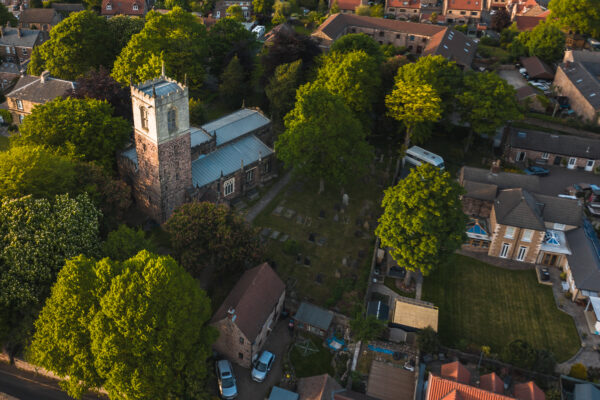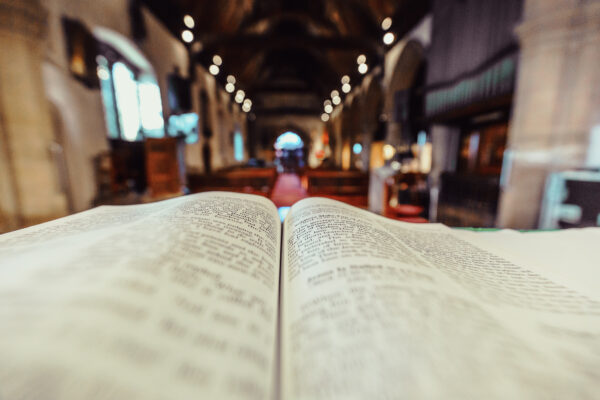My church is wonderful!
I think in the last ten years of frequent attendance I can count on the fingers of one hand the times they haven’t been expecting me as an individual. You see, I’m very special, well actually, not nearly as special as most people!
But the meeters, the greeters and the churchwardens, who are often hovering, wait my arrival with tailor-made service books and newsheets, which they hand over as if it’s the norm. It is, of course, my norm but it’s not theirs. Even so, they don’t forget. I can’t read small print but the unfailing people who prepare and print enable me to join in, amazingly.
Yet so often, when visiting a new church, I can’t join in.
Of course churches don’t know that I can’t see, before I arrive. And can’t possibly know what size print is best for me, or anyone. I am absolutely certain that every church in this diocese wants to make every person who walks through the door feel as special as I do at my church, every Sunday. My lovely cousin doesn’t understand it. After seeing how I’ve been looked after at various churches, she once said, “but it’s as though you know each other when you go to a different church, and you’ve never even met!” Alleluia! I’m so thankful for all the kind and thoughtful welcomes I’ve ever had!
I hope you can understand where i’m coming from. You may even be tempted to think that i’ve trained my church well over the years. But to be completely honest, I haven’t. I just used to be the person who worked the printer in the parish office and the “enlarge to 141%” button was easy to tap! It’s been something we’ve worked at together over time.
Welcoming blind and partially sighted people does take time and effort, so here are 9 quick tips to help you along the way:
1. Assume there is a need, even if you don’t yet know it
You are safe to assume that there will be a few people in all congregations who will find it easier if they have larger print or print on coloured paper. It is sometimes linked to age and some people will feel less than happy about admitting that so they simply won’t ask. So have some large print/coloured sheets visibly in your hand as you welcome. (Btw fear of aging starts about 29 in women, 49 in men…)
2. Get into the habit of printing a few extra large prints
This goes for every service including one-offs, baptisms, weddings, funerals and others. I do realise it’s extra work for already hard-working people but imagine if someone with weak vision came to a wedding and you’d been able to zip their posh service sheet through a photocopier to enlarge it – they’d definitely appreciate and remember that!
3. Normalise the large-print process
If you are any part of the production of printed materials, you could spend some time finding out how to enlarge on your printer or photocopier. This information is vital and will benefit your whole team. You could even write it down, print it out, and put where it can be seen by everyone who may use the machine, in large print!
4. Increase the font size, not the page size
When you’re producing large prints its best to make the text as large as possible to fit the page and to minimise space between lines. And please remember that A3 is too large to be useful. We often can’t even see the top of the page it’s so far away! And it’s unwieldy and attention-grabbing. You will get proficient with A4 I promise! Torch Trust (see next tip) suggest printing no less than 17pt.
5. Use available advice and resources
There are wonderful people out there, ready to support those who want to grow in this kind of welcome. One great example is Torch Trust. Torch Trust exists to enable blind and partially sighted people to encounter Jesus, grow in their Christian faith and thrive in Christian community. They publish books in large print, in audio, Braille and are really supportive and encouraging.
6. Welcome is a whole-church project
Get your congregation on board with sharing your vision – literally! – of everyone accessing print. You could even have a one-off whip-round to buy some large print hymn books if you still use them. See if anyone is happy to bring a tablet to a Lent or Advent group to follow the readings and remember that that those with weak sight can’t share books.
7. Technology can be a friend
Look very carefully at large print Bibles if you’re wondering whether to buy. They weigh a ton, and often need to be giant print Bibles so always check print sizes and weight before you buy. Electronic tablets would often serve the purpose better, are more flexible and possibly even cheaper.
8. Screens are for everyone
It is a generous act for all you 20:20 people to step up and get used to reading in BIG on screens! If you are putting together a PowerPoint presentation or in charge of song words on screens, you should be aware of contrast between words and background and avoid using busy pictures behind text. Those kind of simple adjustments mean people like me don’t have to always sit on the front row.
9. Be willing to ask and act
If you or those without sight loss are just managing to make something out or just manage to catch something, then it means that it is probably missed by those with impaired vision. Don’t be afraid of ask “Did you see…?” Even better would be to ask those who you know suffer sight loss, what would help them. People are often very used to their preferred enlarging quirks on paper or screen – so do be willing to raise the conversation. You might end up doing two different sizes, but that’s two people who will feel so very cared for and can then join in!
We do indeed walk by faith and not by sight (2 Corinthians 5:7) but vision aids certainly help our journey and allow people like me to join in! So I hope my story and these 9 tips are a great help to you as you grow as a welcoming church.
Chrissy Grindle attends St Lawrence Church, Hatfield and is interested in people’s stories, propagating plants, and has recently completed an Access to H.E. course in Art and Design at Doncaster Hub.



